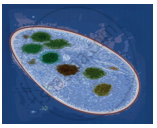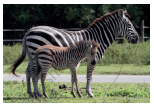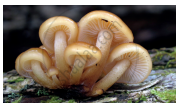Advertisements
Advertisements
Question
Find out what do the terms algal bloom signify.
Solution 1
Algal bloom refers to an increase in the population of algae or blue-green algae in water, resulting in discoloration of the water body. This causes an increase in the biological oxygen demand (BOD), resulting in the death of fish and other aquatic animals.
Solution 2
The rapid increase in populations of algae and other phytoplankton, in particular cyanobacteria, in water bodies rich in organic matter is called algal bloom. The density of the organisms may be such that it may prevent light from passing to lower depths in the water body. An increase in nitrate levels, a mineral ion necessary for both bacterial and algal growth, is the cause of algal blooms.
The source of increased nitrate may be agricultural fertilizers, which are leached – into water systems from the land, or sewage effluent.
APPEARS IN
RELATED QUESTIONS
State the economically important uses of heterotrophic bacteria.
What is the nature of cell-walls in diatoms?
Who proposed the five kingdom of classification?
The binomial name of pigeon is ______.
True (or) False. If false write the correct answer.
In the year 1979, Five kingdom classification was proposed.
Match the following.
| 1. | Monera | Moulds |
| 2. | Protista | Bacteria |
| 3. | Fungi | Neem |
| 4. | Plantae | Butterfly |
| 5. | Animalia | Euglena |
List out the five kingdoms classification
Write two examples of Monera.
See the Diagram and write the kingdom :
Pictures of some living organisms are given below. Identify the kingdom to which each of these belong and write the kingdom name in the blanks provided.
| a. |  |
|
| b. |  |
|
| c. |  |
|
| d. |  |
|
| e. |  |
The book Systema Naturae was written by
Write true (T) or false (F)
Blue green algae belongs to the kingdom Protista.
Prokaryotes are grouped in Kingdom ______.
Give examples for the following
Bilateral, dorsiventral symmetry is found in ______.
‘Peat’ is an important source of domestic fuel in several countries. How is ‘peat’ formed in nature?
